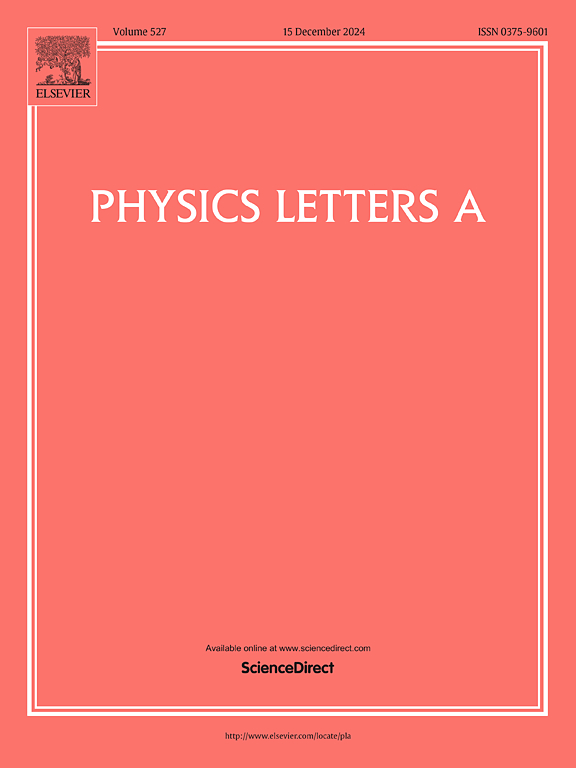h-BN、石墨烯和MoS2中热波纹的分布函数
IF 2.3
3区 物理与天体物理
Q2 PHYSICS, MULTIDISCIPLINARY
引用次数: 0
摘要
传统的薄板和薄膜理论很好地描述了二维材料在外力作用下的变形。然而,对于由热波动引起的随机分布波纹,仍然缺乏系统的理论来描述有限温度下的结构状态。在这项工作中,我们进行了分子动力学模拟和统计力学来研究热波纹在广泛研究的二维材料(如h-BN,石墨烯和MoS2)中的分布。结果表明,二维材料的热波纹不同于外力引起的变形,其概率随波纹高度与直径之比(t/D)的增加呈指数衰减。通过简单地将玻尔兹曼分布中的能量替换为二维材料的经典弯曲能量,我们发现配分函数与弯曲刚度与温度之比的平方根成正比。所得分布函数与分子动力学模拟结果吻合较好,表明概率符合玻尔兹曼分布规律。我们的模拟和理论推导将使人们对二维材料中的波纹形态有更深的理解,并推动二维系统在有限温度下的状态理论的发展。本文章由计算机程序翻译,如有差异,请以英文原文为准。
Distribution function of thermal ripples in h-BN, graphene and MoS2
Deformations induced by external loading in two-dimensional (2D) materials are well described by traditional thin plate and film theories. However, for randomly distributed ripples induced by thermal fluctuations, a systematic theory is still lacking to describe the structural state at finite temperature. In this work, we performed molecular dynamics simulations and statistical mechanics to investigate the distribution of thermal ripples in widely studied 2D materials like h-BN, graphene, and MoS2. Our results indicate that thermal ripples are different from the external force-induced deformations in 2D materials, and their probability decays exponentially as the ratio of ripple height to diameter (t/D) increases. By simply substituting the energy in Boltzmann distribution with classical bending energy of 2D materials, we found that the partition function is in proportion to the square root of the ratio of bending stiffness to temperature. The derived distribution function is in good agreement with molecular dynamics simulations, indicating that the probability conforms to the law of Boltzmann distribution. Our simulations and theoretical derivation will give a deeper understanding of ripple morphology in 2D materials and advance the development of the state theory of 2D systems at finite temperature.
求助全文
通过发布文献求助,成功后即可免费获取论文全文。
去求助
来源期刊

Physics Letters A
物理-物理:综合
CiteScore
5.10
自引率
3.80%
发文量
493
审稿时长
30 days
期刊介绍:
Physics Letters A offers an exciting publication outlet for novel and frontier physics. It encourages the submission of new research on: condensed matter physics, theoretical physics, nonlinear science, statistical physics, mathematical and computational physics, general and cross-disciplinary physics (including foundations), atomic, molecular and cluster physics, plasma and fluid physics, optical physics, biological physics and nanoscience. No articles on High Energy and Nuclear Physics are published in Physics Letters A. The journal''s high standard and wide dissemination ensures a broad readership amongst the physics community. Rapid publication times and flexible length restrictions give Physics Letters A the edge over other journals in the field.
 求助内容:
求助内容: 应助结果提醒方式:
应助结果提醒方式:


